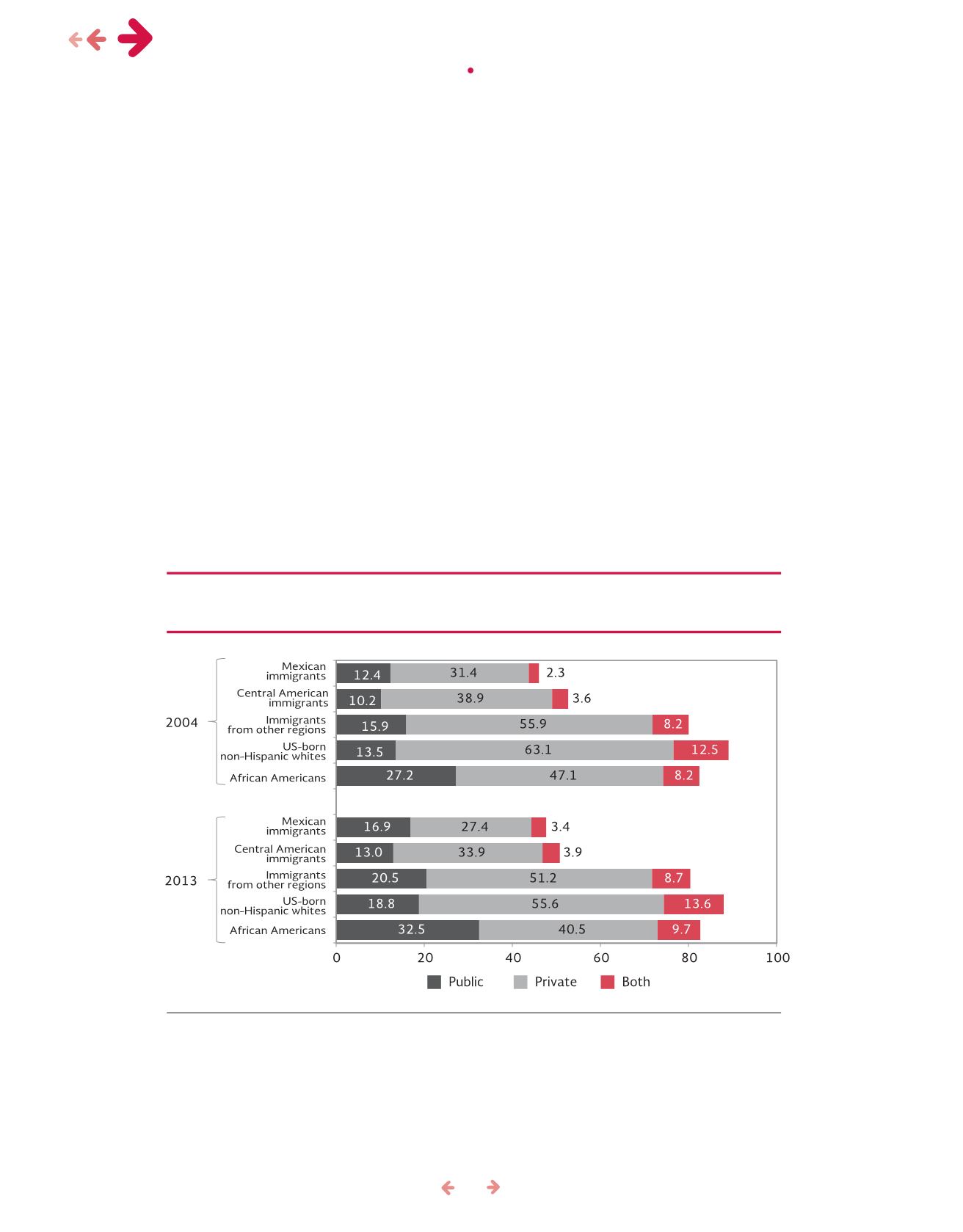
34
Typeofhealth insurance
Mexican immigrants have the lowest rates of
coverage throughprivatehealth insurance
The health care system in theUnited States ismainly
based on private insurance, usually obtained through
employment (one’sownor thatofa relative),whereas
public insurance covers aminority, as it is targeted at
thosewith the lowest incomes (
Medicaid
) and the el-
derly (
Medicare
).
These programs undeniably provide medical
security to a significant number of low-income indi-
viduals and families in the United States. However,
low-income immigrants, particularly those who are
undocumented, face significant obstacles toobtaining
public health insurance.
In 2013, themajority of the insured population
was covered by a private policy (exclusively or com-
binedwith a public policy) in the five groups analyzed.
Mexican and Central American immigrants had the
lowest ratesofprivatehealth insurance(31%and38%,
respectively), followed by African Americans (50%).
On the other hand, 69% of non-Hispanic US-born
whites and 60% of other immigrants had private
insurance(Figure19).These inequalities inprivatehealth
carecoverage reveal a racial/ethnicstratificationof the
labormarket in theUnitedStates, whereby the former
twogroupshaveagreaterpresence inoccupationswith
limitedworking benefits, while the latter two are con-
centrated in jobs that oftenprovide thesebenefits.
Source: Migration Policy Bureau, SEGOB, based on U.S. Census Bureau,
Current Population Survey
(CPS), for March
2004and2013. IntegratedPublicUseMicrodataSeries (IPUMS)USA,Minneapolis: UniversityofMinnesota.
Figure19. Populationof theUnitedStateswithhealth insurance,
by typeof Insurance, basedon regionof originandethnicityor race, 2004and2013
migration & health •
mexican immigrants in the us: a 10 year perspective


